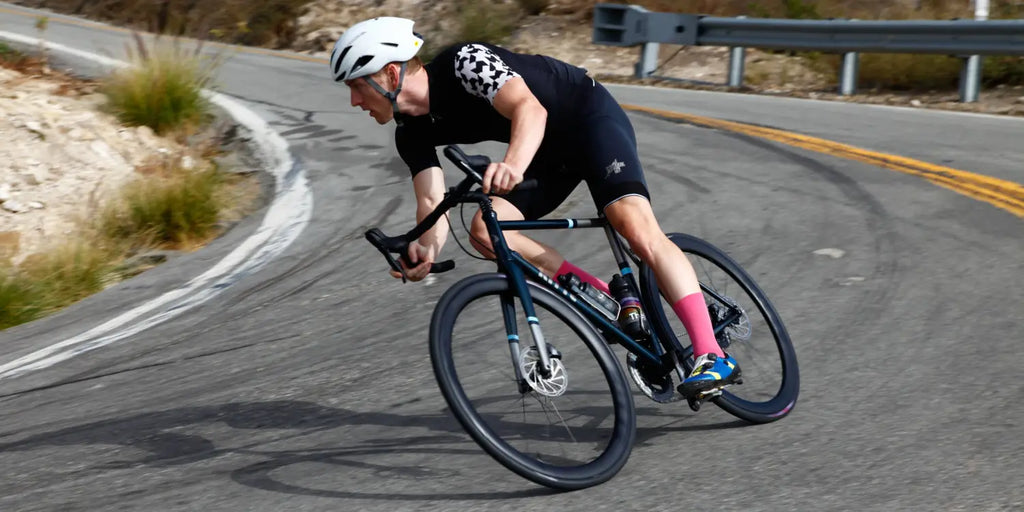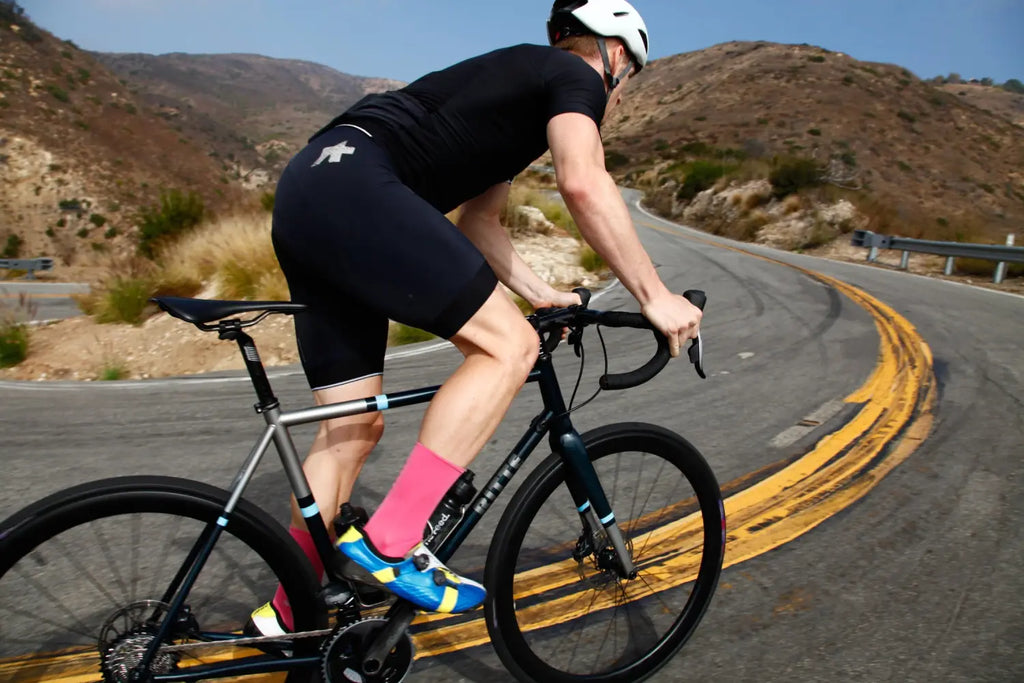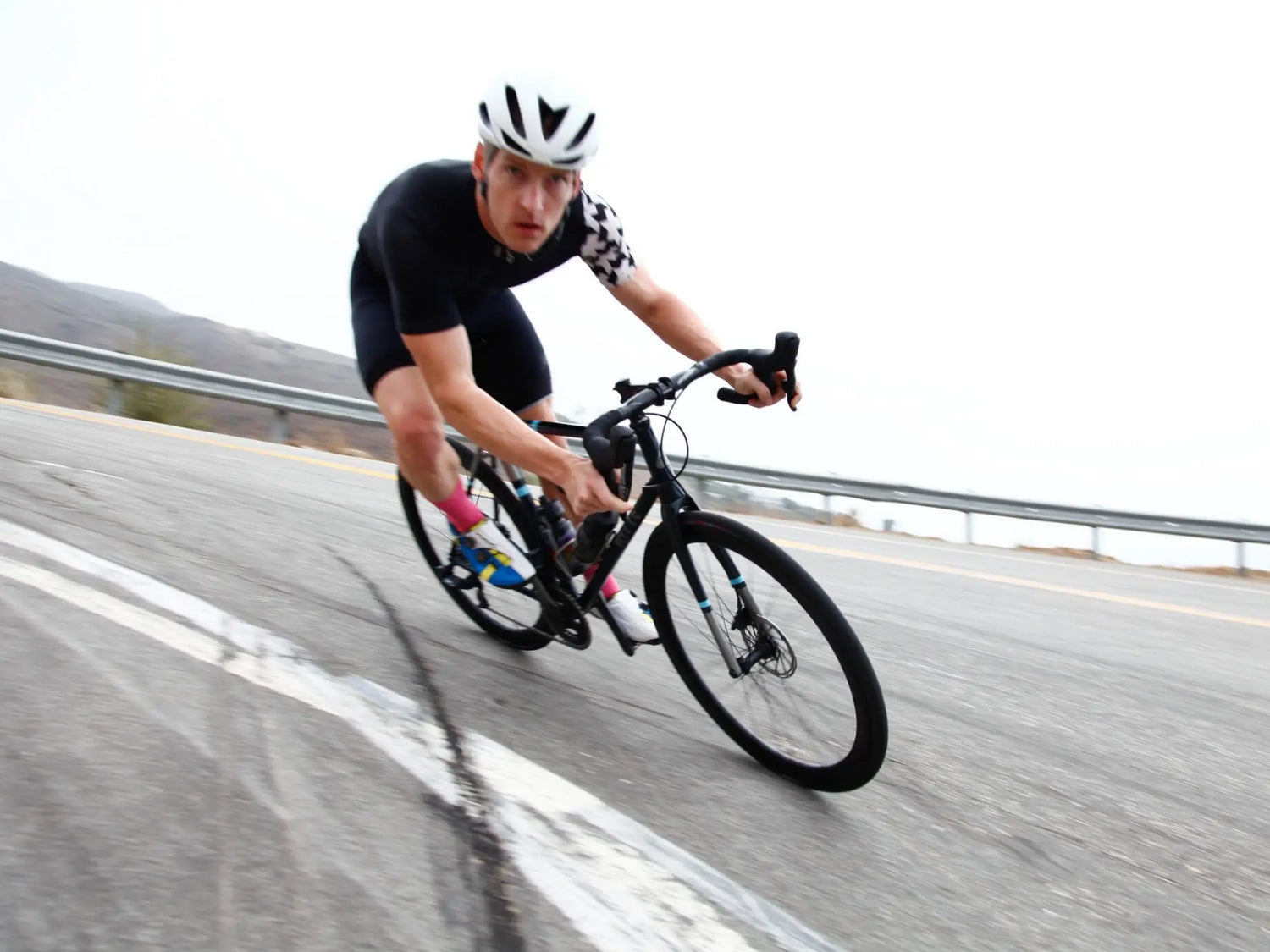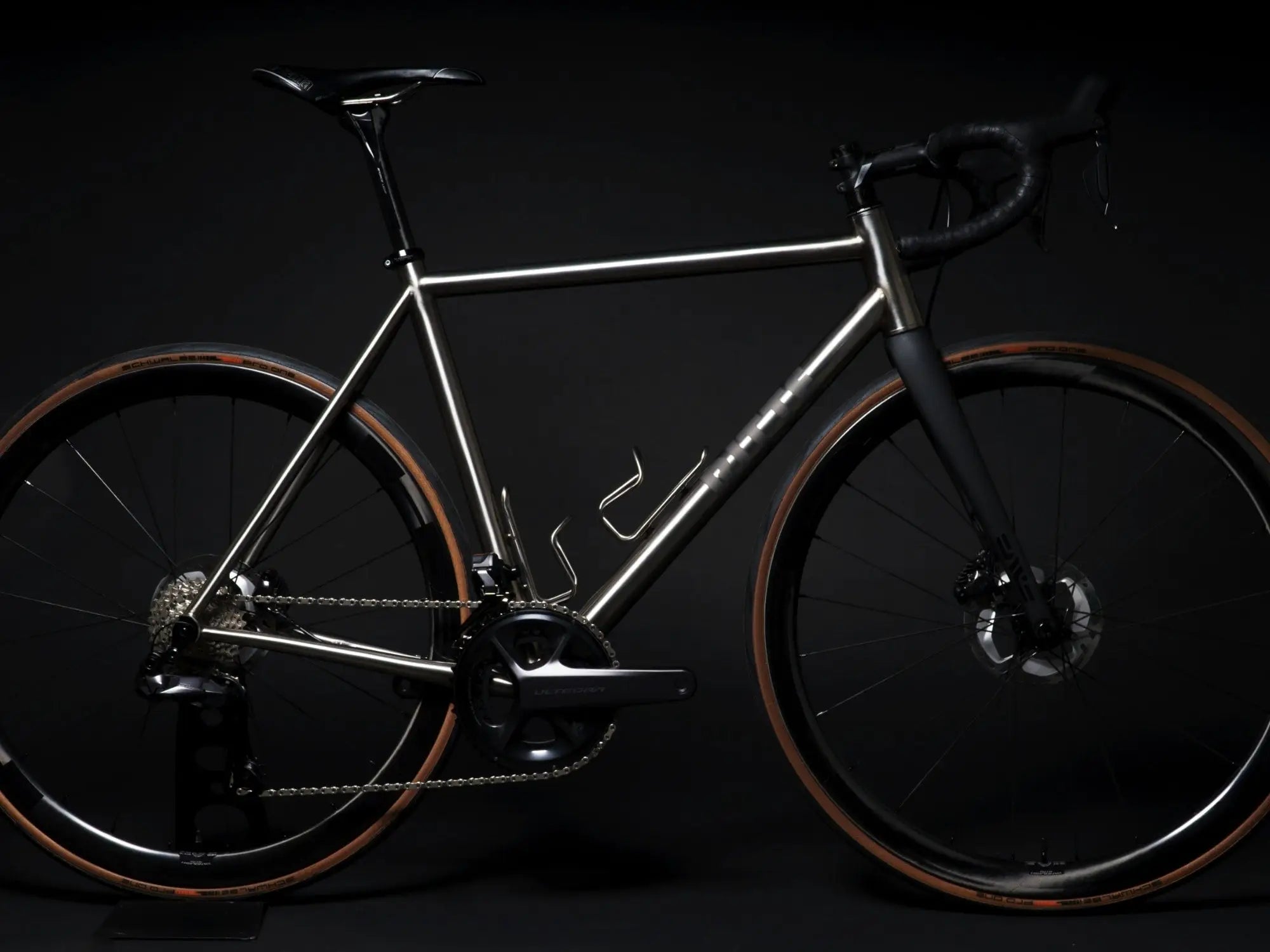Armed with a little bit of information about bike geometry and design, you’ll want to understand how you fit onto a bike. There is a lot of information about bike fit, and a lot of opinions - it can be hard to make sense of all of that. So we’ll lay out generally how our bikes fit and what a well fitting bike should deliver for you.
Good Fit
A bike fit, first and foremost, should deliver a comfortable and efficient position. On a road bike, you’re looking for a position that doesn’t strain your body over longer days in the saddle while putting you in a position that you can not only make power efficiently but also be reasonably streamlined through the air.
We’re not looking for a TT position, which in itself has many compromises. We’re also not looking for a position in which you are so upright that you become a sail, as that will be compromised in the opposite way from a TT position.
You should never be coming off of your bike in pain. And you should be able to make use of all the different hand positions your dropbars have to offer - the tops, the hoods, a couple of positions in the drops. All of it should be accessible to you. Your hips should be relatively open so your legs spin freely and your knees track straight. And you want to be low, on a road bike getting your body low means a more aerodynamic position.

How Do Rittes Fit?
Aggressive. These are racey bikes and we’re not making any bones about that. They’re designed for a fast riding position - but a fast position that a normal cyclist like you or I can attain.
These bikes are not meant to contort you, and they’re not bikes designed around the 1% of the 1% of the raciest racers. UCI Pros are renowned for terrible and unachievable bike fits, so that is hardly our objective here. We want you to want to ride again another day.
We build bikes that put the weight in the right places for confident handling - and that means they’re aggressive. They’re not “endurance” geometry with tall front ends, but they can be ridden all day happily.
Why an Aggressive Fit?
A few reasons - as we covered in our geometry article, balance is everything with regards to bike handling. Getting weight low and well balanced means a great riding experience.
Secondarily, speed. As we’ve all seen the rise in claims about aerodynamic efficiency of bicycles and components we’re often left wondering…how much of that will a rider notice? When you step back, and look at the bicycle and rider together as a system, there is almost always more to be gained from optimizing the rider than the bike.
An unzipped, flapping jersey can eat up more watts than can be saved by even two full generations of improvement in aerodynamics of a bicycle frame. And the claims made about many bike frames are within the margin of error of the measurements and data collection used to produce those results.
Being in a position that’s too upright means you’ll work harder, fighting the wind more than you need to every pedal stroke of the day. And a position that’s too high can mean discomfort too.
We see a lot of folks with bars that are too wide for their shoulders or stems propped up by a few too many spacers. One of the most common neck pain issues we see is from bikes that are too tall or too relaxed rather than too low - a big shift from years past. Our bikes are designed to get you into an efficient position but not to sacrifice your comfort.
Do we take aerodynamics seriously? You bet. To the best of our ability we are taking steps to make our bikes efficient. But we’re also looking at the whole system, we want you to get onto the bike and be able to discern that your position is not only comfortable for your riding, but it’s not losing you any free speed. After all, it’s a lot more affordable to strengthen your core and get into a fast position…plus we could all use a little more yoga anyways.
What Will I Notice?
Hopefully nothing. We don’t mean that in a snarky way - it’s just true. A bike that fits well means you’re not going to be thinking about the bike - you’re going to be riding it. The bike does what you intend for it to do. You’re not thinking about your hand position or saddle position, you’re not shifting around, you’re not dealing with numb hands. You’re just out riding your bike, covering ground as rapidly as ever. When you get off the bike, you’re also not thinking about it - because it shouldn’t be causing you any pain or discomfort.

How Do I Know If a Ritte Will Fit Me?
You may already be coming from a carbon race bike or have a bit of experience dialing in your fit - in which case you look at the geo chart and you know “dang, this bike is just right!”
Buf if you don’t have that experience or you’ve always relied on an in-person fit, it’s still easy.
Just ask us. If you’re not sure, shoot us a message. We’ve gotten very adept at fitting riders to bikes and making them comfortable. You might be surprised to find that a more aggressive position is often more comfortable than a more upright one, and leaves you less fatigued at the end of the day.
We’ve got a really simple system, you can see the details we’re looking for HERE.
You can send us those details, a photo or video of you riding, or info from your most recent bike fit if it’s feeling great for you and we’ll give you an idea of what your position would look like on one of our bikes. All of our dealers would be glad to do the same assessment for you. Online or in person, we want you to love your bike.




